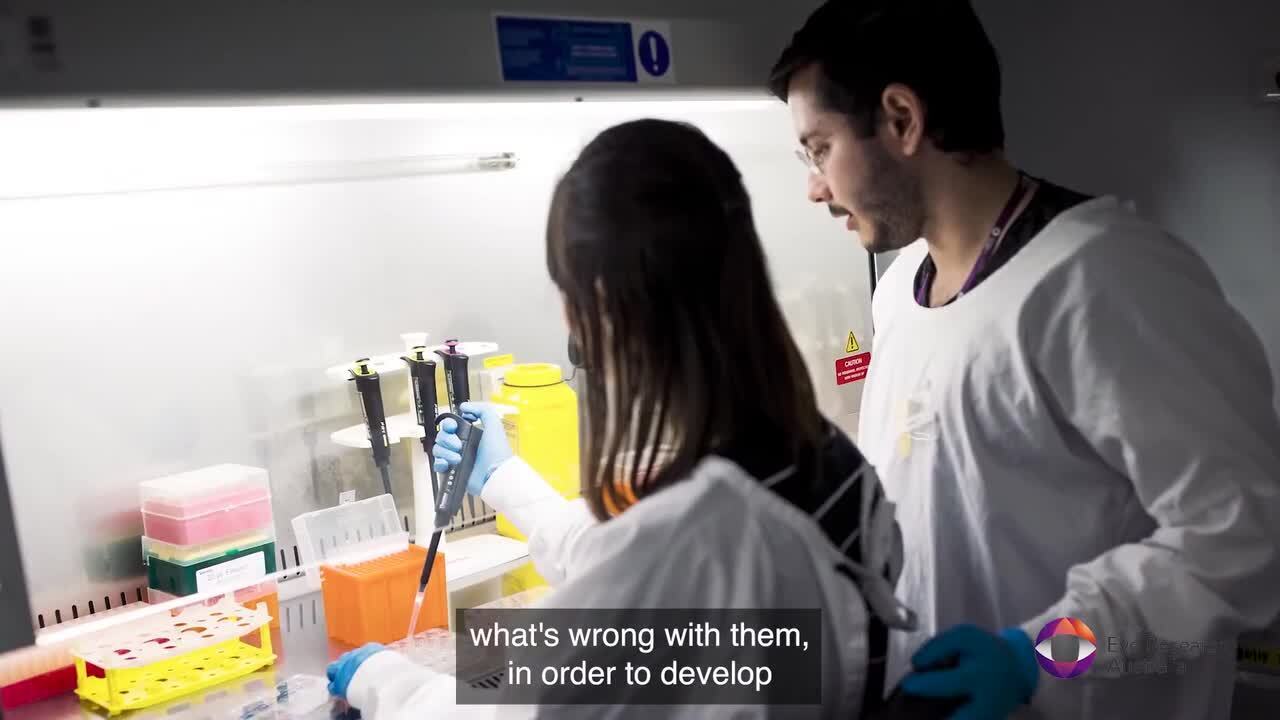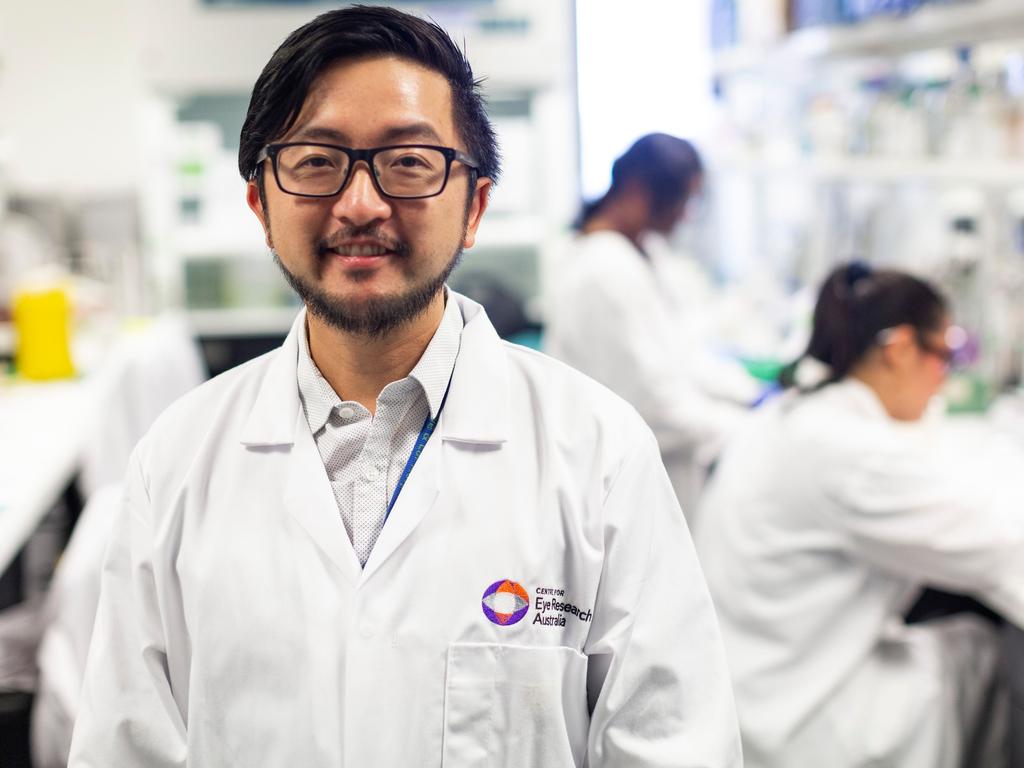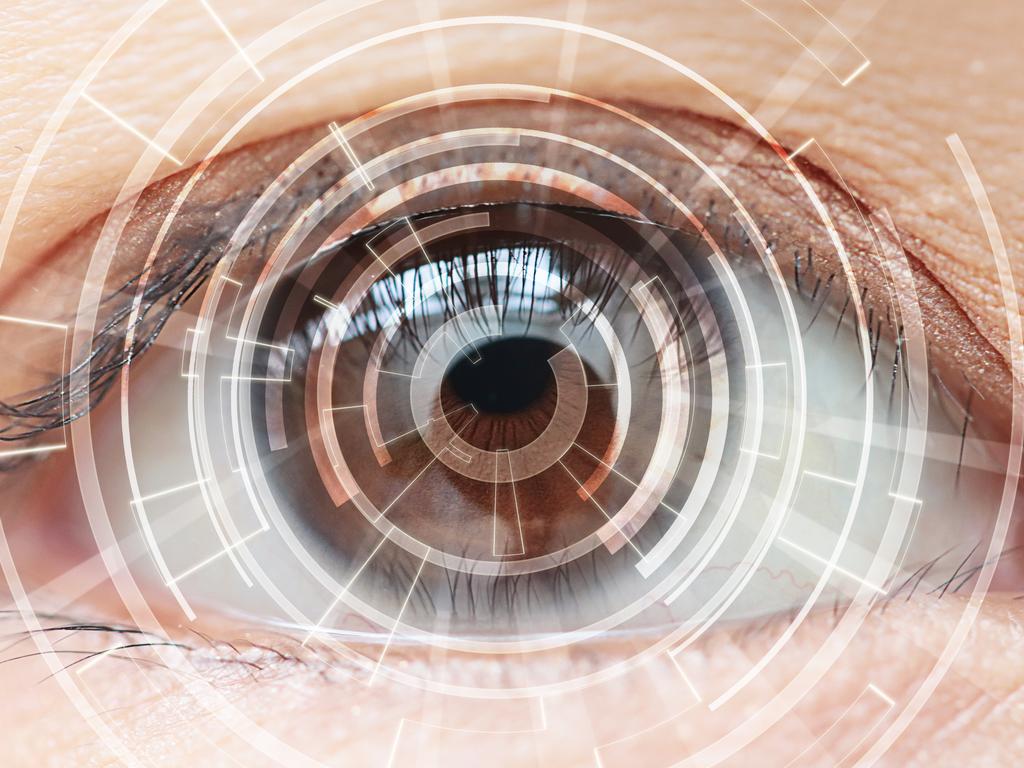Vic researchers ramp up experiments to treat blindness
A new gene therapy delivered as a one-off injection to the eye could reverse blindness and “switch on sight” for millions of people with impaired vision.

Victorian researchers are a step closer to treating and reversing ‘incurable’ blindness using groundbreaking gene therapy delivered as a single injection into the eye.
Biotech company Mirugen is set to announce plans to ramp up experiments to develop its new therapy, saying it can “switch on sight”.
The company, a spin off from the Centre for Eye Research Australia (CERA), says it shows promise using the retina’s own stem cells to prevent and reverse damage to the light sensing photoreceptors in the back of the eye.

Co-founder Raymond Wong, who is also CERA’s head of Cellular Reprogramming, said the motivation was the potential to help patients with vision impairment.
University of Melbourne Professor Wong said the retina was a thin layer of cells at the back of the eye responsible for detecting light and converting it into an electrical signal and sending it to the brain to interpret as an image.
The team hopes the therapy will be able to treat eye conditions such as retinitis pigmentosa (a group of rare eye diseases that affect the retina), Stargardt disease (an inherited disorder that usually causes vision loss in childhood) and age-related macular degeneration.
These cause vision loss and blindness in millions of people worldwide.
The therapy involves injecting engineered viruses into the eye to deliver reprogramming genes into retinal cells that would then stimulate stem cells to replace damaged cells.
Prof Wong said it could be applied to multiple forms of blindness and worked by stimulating the regeneration of the photoreceptors, regardless of the defective genes that’s causing blindness to restore vision.
“We’re really excited about this work,” he said. “Hopefully we can … restore vision.
“I am fascinated by the approach of using engineered genes to control the behaviour of the cells, and that really is the core value of cell reprogramming where we can use genes to control the cell fate, and we’re able to turn, in this case, the stem cells within the eye into photoreceptors.”

Mirugen is funded by CUREator+ which is part of the Federal Government’s Medical Research Future fund. The program is managed in partnership with Brandon BioCatalyst and ANDHealth to help accelerate early-stage Australian medical research and innovations with commercial potential.
On Monday Mirugen will announce a new grant of $1.92m from CUREator+ to help accelerate its work following promising results in preclinical studies.
Health Minister Mark Butler said turning new research into medicines and tools which can be used to treat patients was often a long and costly process.

“Our support will ensure innovative research can become life changing and lifesaving treatments,” Mr Butler said.
Prof Wong said the funding would allow the team to perform crucial preclinical experiments needed to accelerate the drug development program.




